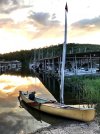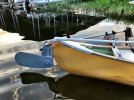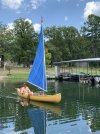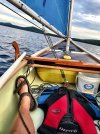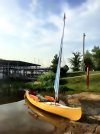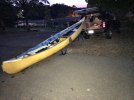floydvoid
LOVES Wooden Canoes
@Blott That lug rig on the Pal in your picture- is that a particular sail design from a modern boat? Or custom made? I have been looking through the Sailrite sail kits and looking at size and shape of some existing sail designs. The Shellback Dinghy seems to fit what I would like. That steep angle of the yard I think would look good on my canoe, your sail design seems to have the same look. Maybe 56 square feet is a bit large? https://www.sailrite.com/Shellback-Dinghy-Lug-Main-Sail-Kit
@Todd Bradshaw I ordered my Sail Maker's Apprentice book to help give me some background info on the nitty gritty of cutting and sewing. It does not appear that the old canvas lanteen I picked up has much more than a straight cut to it. What is the tape along the luff and foot (only on one side) called? I imagine I need a cotton based material to match the stretch of my cotton fabric.
@Todd Bradshaw I ordered my Sail Maker's Apprentice book to help give me some background info on the nitty gritty of cutting and sewing. It does not appear that the old canvas lanteen I picked up has much more than a straight cut to it. What is the tape along the luff and foot (only on one side) called? I imagine I need a cotton based material to match the stretch of my cotton fabric.







